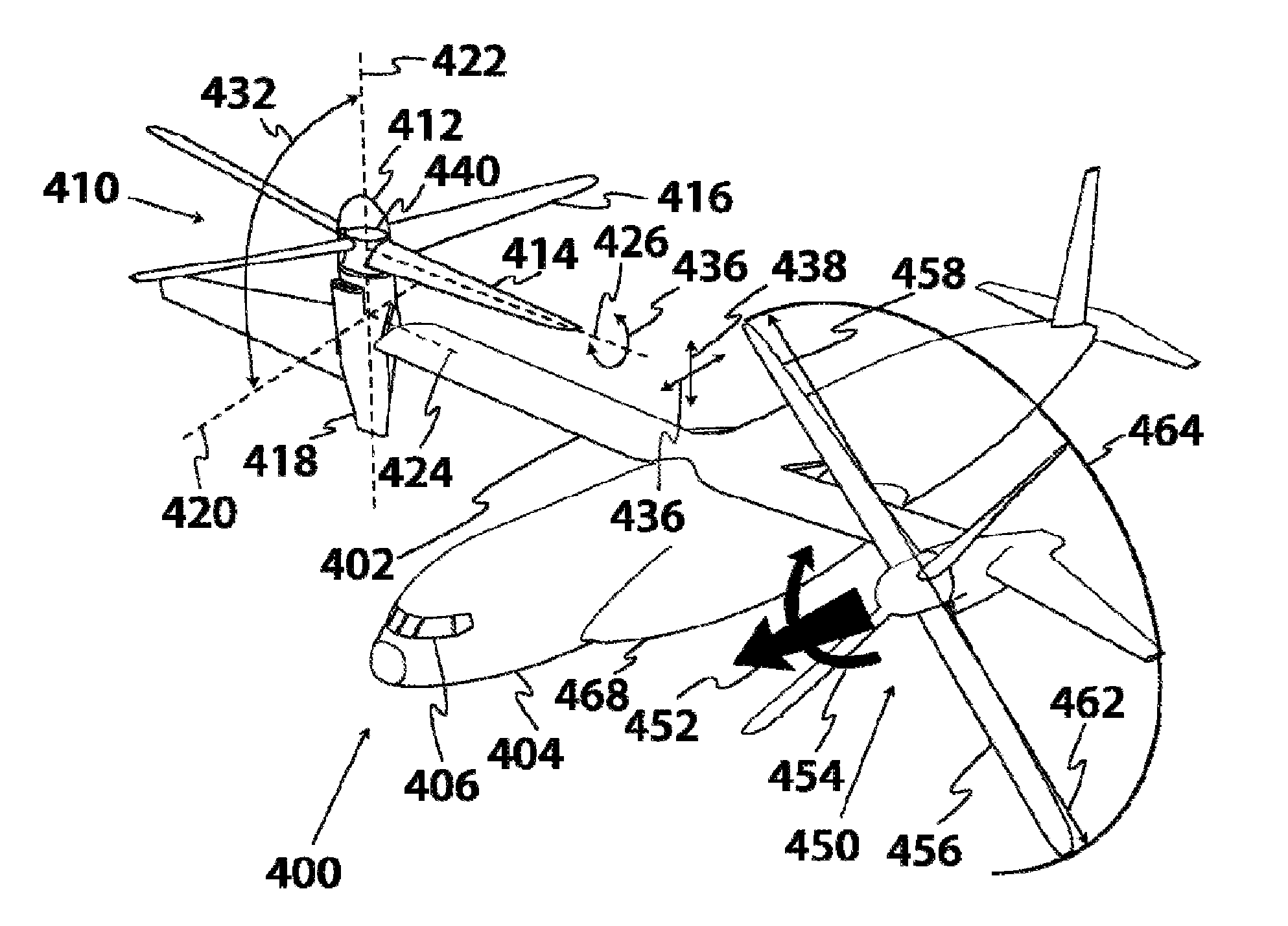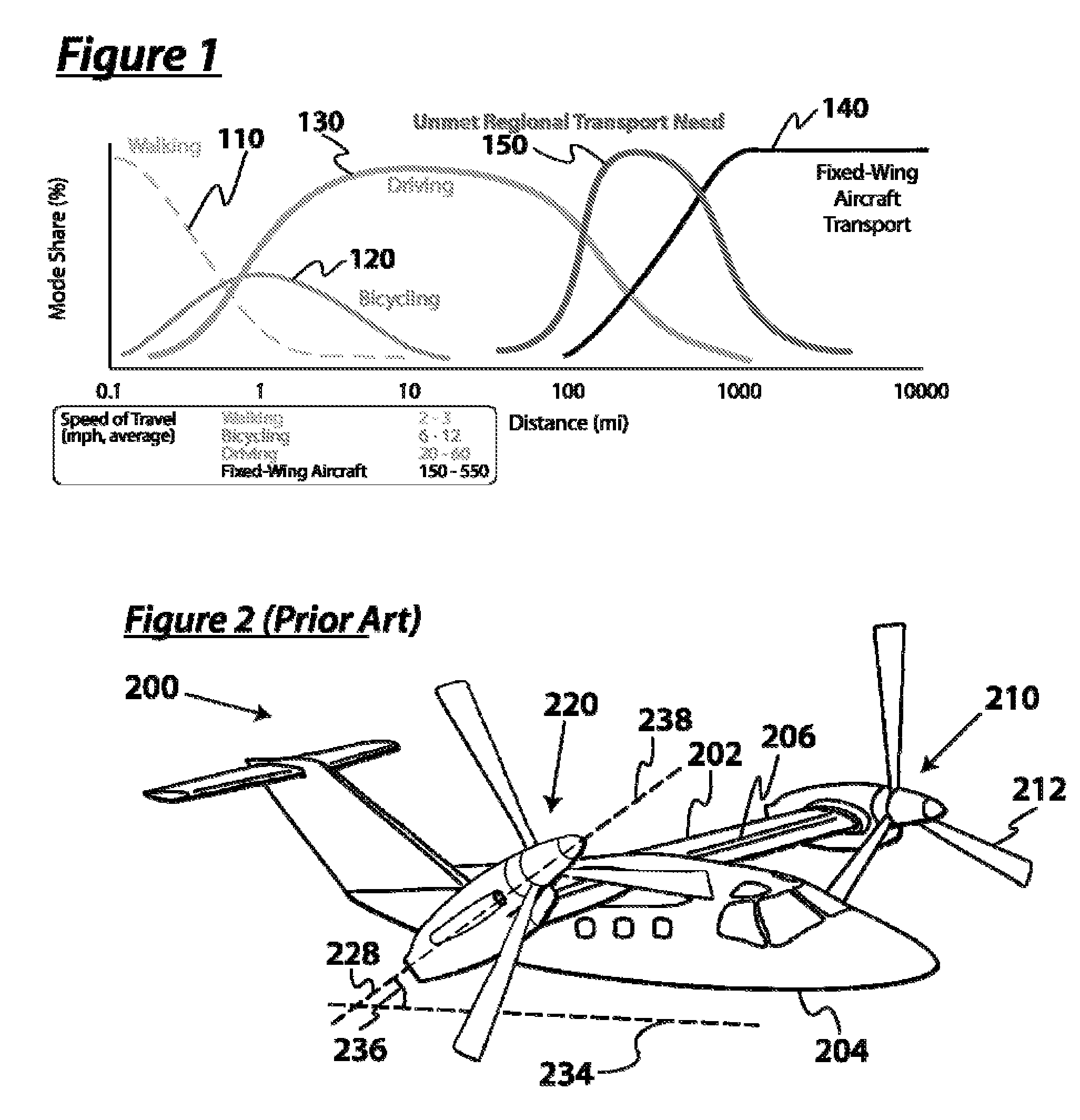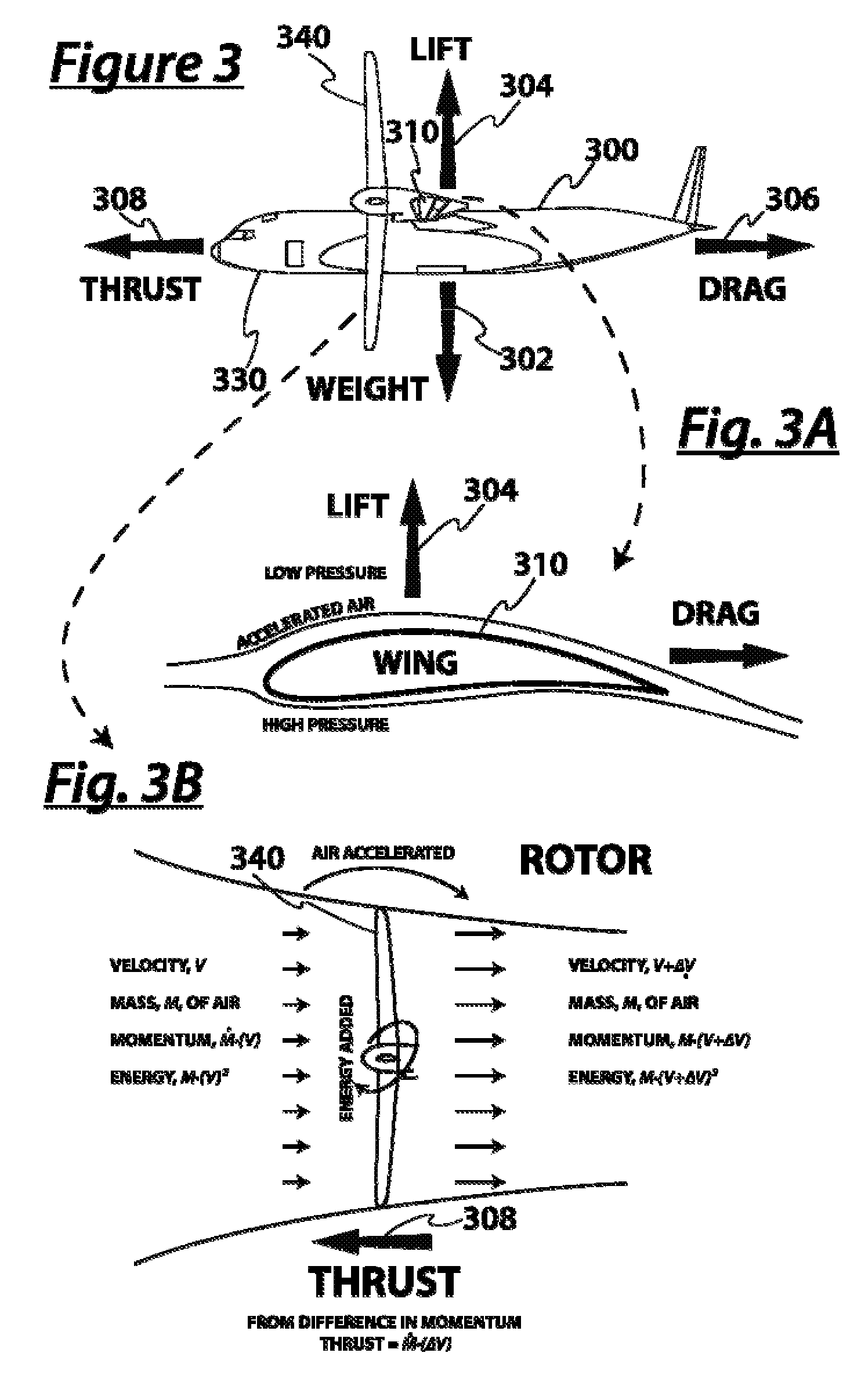Aircraft with Integrated Lift and Propulsion System
a propulsion system and aircraft technology, applied in the direction of vertical landing/take-off aircraft, aircraft navigation control, transportation and packaging, etc., can solve the problems of increasing the cost, driving down the speed of this travel mode, and reducing the efficiency of traditional fixed-wing air transportation for mid-range, or regional, trips between 100 and 1000 miles, so as to reduce the amount of engine power
- Summary
- Abstract
- Description
- Claims
- Application Information
AI Technical Summary
Benefits of technology
Problems solved by technology
Method used
Image
Examples
Embodiment Construction
[0050]Physics of Efficient Flight p As shown in the side view illustration of FIG. 3, a preferred aircraft 300 in non-accelerated flight is in force equilibrium. Its weight 302 is balanced by the same amount of lift 304, and the aerodynamic resistance to its motion, drag 306, is countered by a propelling thrust 308. An aircraft in steady level equilibrium flight is said to be in cruise flight.
[0051]The generation of thrust requires energy, often produced via combustion in a turbine engine. Efficient flight minimizes the amount of energy added, or equivalently, the amount of fuel burned to maintain equilibrium flight.
[0052]FIG. 3A provides detail of the wing 310 while FIG. 3B provides detail of the rotor 340.
[0053]A flying machine must generate lift 304 and thrust 308 forces to fly. Lift is generated by air pressure differences across lifting surfaces, especially wings 310. However, lifting surfaces also generate some drag, including induced drag, due to the direction of the generate...
PUM
 Login to View More
Login to View More Abstract
Description
Claims
Application Information
 Login to View More
Login to View More - R&D
- Intellectual Property
- Life Sciences
- Materials
- Tech Scout
- Unparalleled Data Quality
- Higher Quality Content
- 60% Fewer Hallucinations
Browse by: Latest US Patents, China's latest patents, Technical Efficacy Thesaurus, Application Domain, Technology Topic, Popular Technical Reports.
© 2025 PatSnap. All rights reserved.Legal|Privacy policy|Modern Slavery Act Transparency Statement|Sitemap|About US| Contact US: help@patsnap.com



